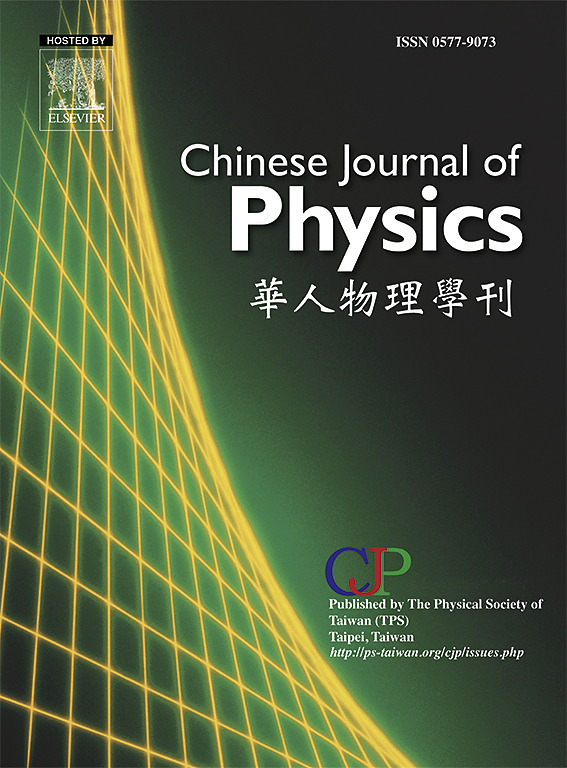Stability and quadruple solution dynamics of unsteady ternary hybrid nanofluid flow over a stretching/shrinking wedge
IF 4.6
2区 物理与天体物理
Q1 PHYSICS, MULTIDISCIPLINARY
引用次数: 0
Abstract
The stability analysis of quadruple solutions in unsteady ternary hybrid nanofluid flow past a stretching/shrinking wedge is conducted to optimize boundary layer characteristics, enhancing heat transfer and reducing thermal resistance. Based on an industrial process, the mathematical model determines critical values for first–second and third–fourth solutions using the BVP4C function in MATLAB. Key parameters, including the unsteadiness parameter, stretching/shrinking parameter, wedge parameter, suction/injection, and hybridity, influence flow dynamics, and heat transfer, with validation confirming alignment with previous studies. The skin friction coefficient and Nusselt number increase for a shrinking wedge with higher unsteadiness, nanofluid type, and suction/injection. The first and third solutions are stable, while the others are not. At a stretching/shrinking parameter of -9 and a nanoparticle volume fraction of 0.04, the ternary nanofluid achieves 0.28% higher thermal efficiency than the binary nanofluid, which exceeds the mono-nanofluid by 0.59%. The novelty of this study lies in identifying quadruple solutions and their critical values for none, two, and quadruple solutions, contributing to advancements in slit die extrusion engineering and heat exchanger applications.

求助全文
约1分钟内获得全文
求助全文
来源期刊

Chinese Journal of Physics
物理-物理:综合
CiteScore
8.50
自引率
10.00%
发文量
361
审稿时长
44 days
期刊介绍:
The Chinese Journal of Physics publishes important advances in various branches in physics, including statistical and biophysical physics, condensed matter physics, atomic/molecular physics, optics, particle physics and nuclear physics.
The editors welcome manuscripts on:
-General Physics: Statistical and Quantum Mechanics, etc.-
Gravitation and Astrophysics-
Elementary Particles and Fields-
Nuclear Physics-
Atomic, Molecular, and Optical Physics-
Quantum Information and Quantum Computation-
Fluid Dynamics, Nonlinear Dynamics, Chaos, and Complex Networks-
Plasma and Beam Physics-
Condensed Matter: Structure, etc.-
Condensed Matter: Electronic Properties, etc.-
Polymer, Soft Matter, Biological, and Interdisciplinary Physics.
CJP publishes regular research papers, feature articles and review papers.
 求助内容:
求助内容: 应助结果提醒方式:
应助结果提醒方式:


